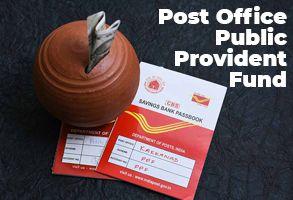
POST OFFICE PUBLIC PROVIDENT FUND
"A Popular Tax Saving and Tax-Free scheme"
Public Provident Fund is a long-term investment scheme by the Government of India. It is a tax-exempt and risk-free savings instrument. It is one of the most popular schemes which is not only attractive for tax saving but certainly for tax-free income. There is a limit of Rs. 1,50,000/- per year and interest is on a cumulative basis.
The scheme is for 15 years which can be extended for 5 years. The rate of interest is on a floating basis which is announced on annual basis by the government. It is a recommended scheme for the accumulation of wealth for the family to meet the financial goals of life.
FEATURES
-
It is a statuary scheme of the Central Govt of India
-
The scheme is for 15 years One deposit of Rs 500/- is compulsory in each financial year Interest is compounded annually Interest is floating and is accrued as per the prevailing rate of a particular financial year
-
The deposit need not be made every month
-
Thus it suits the convenience of the investor An account where the deposit is not made, is termed a discontinued account and it can’t be closed before maturity It can be reactivated by paying the minimum deposit ( Rs 500/-) and a penalty of Rs 50/- Withdrawal is permissible every year from 7th financial year 50% of balance amount Joint account is not permissible
-
Premature closure is not permissible unless it’s a case of death
-
Deposits in PPF qualify for rebate under section 80-c of the Income Tax Act
-
The interest is totally tax-free
-
Nomination facility is available
-
Loan facility available from 3rd financial year
-
The best option for long-term investments
Product Note
Tenure: 15 YEARS
Rate of Interest :
(7.10.% P.A.)
-
Type of Interest: FLOATING RATE DURING THE TENURE
-
Mode of Calculation: COMPOUNDED ANNUALLY BUT PAYABLE AT MATURITY.
- Minimum Amount Required: Rs. 500/- in a financial year
- Maximum Amount Limit: Rs. 1,50,000/- lakh in a financial year
- Who can Invest: An individual
- Documents Required : (I) 2 photographs (ii) along with a self-attested copy of PAN Card and Aadhaar Card